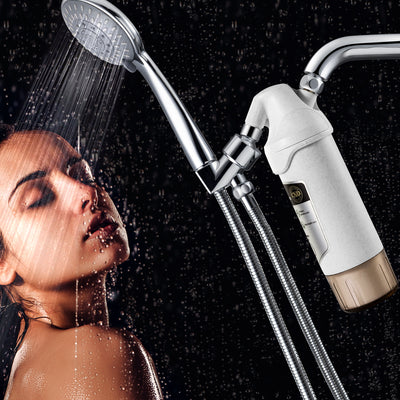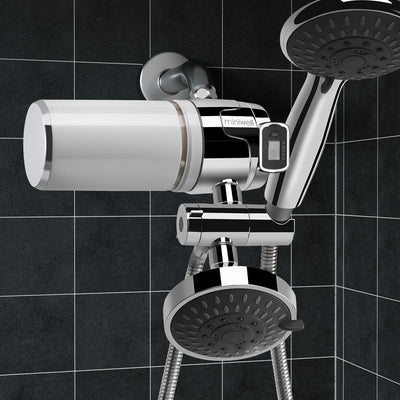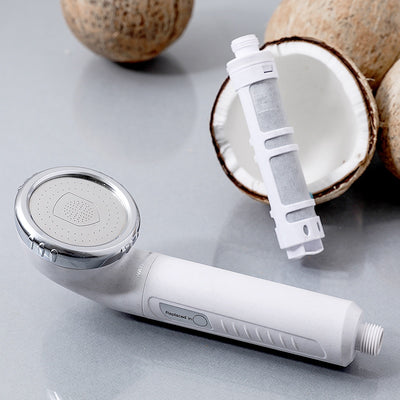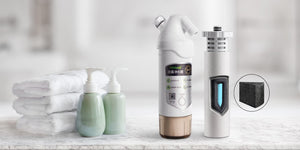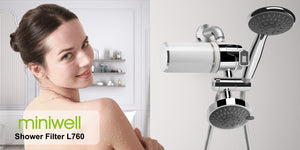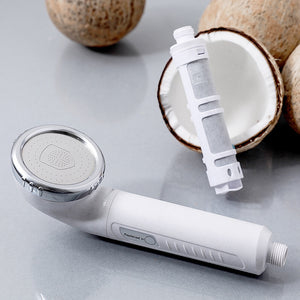—— Five Popular Shower Water Processing Media
Finding so many different types of shower filters in the market can be overwhelming and make you feel like a kid in a candy store who can't decide which flavor of gum to pick! It can be a hilarious and confusing experience, especially if you don't know what you're looking for.
You might feel like a detective trying to solve a mystery, as you sift through technical jargon and conflicting information about different filtration methods.
It's like trying to decipher a secret code! But don't worry, with a little research, you'll be able to determine the right shower filter for you in no time. Firstly, here's a simple introduction to some popular water filtration processing media.
1. Activated Carbon: This guy is like the supermodel of filtration media, all porosity and charisma. It's got the ability to remove impurities like a boss and make water taste oh-so-smooth.
Activated carbon is a form of carbon that has been treated with oxygen to open up millions of tiny pores between the carbon atoms, resulting in a very large surface area. This increased surface area allows activated carbon to effectively adsorb (i.e., stick to the surface) a wide range of organic and inorganic molecules.

Activated carbon can be produced in various forms, including particles and fibers. Activated carbon particles are typically small granules or pellets of activated carbon, ranging in size from a few microns to several millimeters in diameter. These particles are commonly used in water filtration systems, air purifiers, and other applications where a high surface area is required.

2. Sediment Filter: It is a type of water filtration system designed to remove physical particles from water. Sediment filters are typically made up of a porous material such as pleated paper, polyester, or polypropylene, which allows water to flow through while trapping sediment, dirt, sand, and other small particles.

Sediment filters are commonly used in residential and commercial water filtration systems to improve the overall water quality by removing impurities that can affect the taste, smell, and appearance of the water. They are also used to protect other water treatment systems such as reverse osmosis filters, which are more sensitive to sediment and can be damaged by it.
3. Reverse Osmosis (RO) Membrane: RO membrane is like the drill sergeant of filtration media, it's tough, and it doesn't let anything through that it doesn't approve of, dissolved salts and minerals beware!
Activated carbon fiber works based on adsorption, where the activated carbon surface attracts and traps impurities like chemicals, organic compounds, and some bacteria from the water. The adsorption capacity of activated carbon is very high due to its large surface area and porous structure.

Reverse Osmosis, on the other hand, works based on the principle of semi-permeable membranes. The RO membrane has extremely small pores that allow only water molecules to pass through, while impurities like dissolved salts, minerals, and larger particles are trapped and removed from the water.
4. Ceramic: Ceramic filters are like the secret agents of filtration media, they quietly remove pathogens like bacteria and viruses without making a fuss.
Ceramic is an inorganic, non-metallic material that is typically made from a combination of clay, feldspar, and quartz. It is hardened through firing at high temperatures, resulting in a hard, brittle material that is resistant to high temperatures, wear, and corrosion. Ceramics are used in a wide range of applications, including building materials, electrical components, and medical implants, which is a durable, inorganic material used for its strength and resistance to high temperatures and wear.

5. Ultrafiltration (UF) Membrane: UF membrane is a membrane-based separation technique that uses membranes with larger pore sizes than RO membranes. UF membranes typically have pore sizes between 0.01 and 0.1 micrometers, and are used to remove larger particles such as bacteria, viruses, and suspended solids from water. UF is effective at removing impurities that are too large to be removed by traditional filters, but too small to be removed by other methods.
The main differences between RO and UF membranes are the size of the particles they remove and the amount of pressure required to operate. RO membranes have smaller pores than UF membranes and require higher pressure to push the water through the membrane. UF membranes have larger pores and operate at lower pressure, making them a more energy-efficient option.

6. Ion Exchange Resin: It is a synthetic material that removes impurities from water by exchanging ions. Ion exchange resins are typically made from polystyrene or a similar material and are used to remove dissolved ions from water, such as calcium, magnesium, and iron. The resin is made up of beads that contain a negatively charged functional group, such as sulfonic acid, which attracts positively charged ions, such as calcium or magnesium. As the water passes through the resin, the ions are exchanged, and the impurities are removed.

In summary, the choice between different processing media will depend on the specific impurities that need to be removed from the water. So there you have it, and I am sure you will soon find the ideal shower filter that fits your needs.

